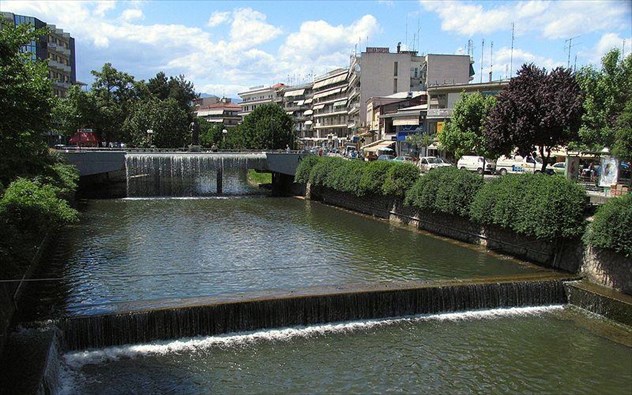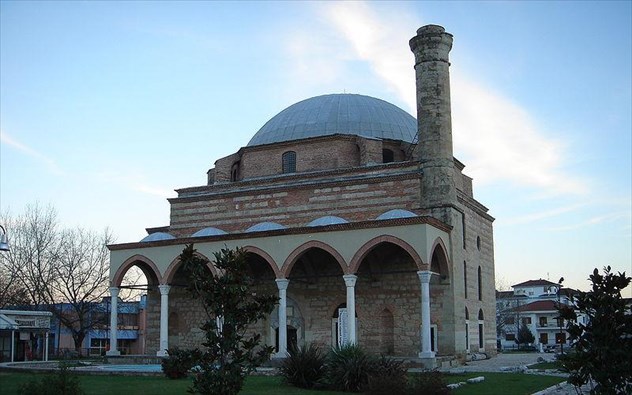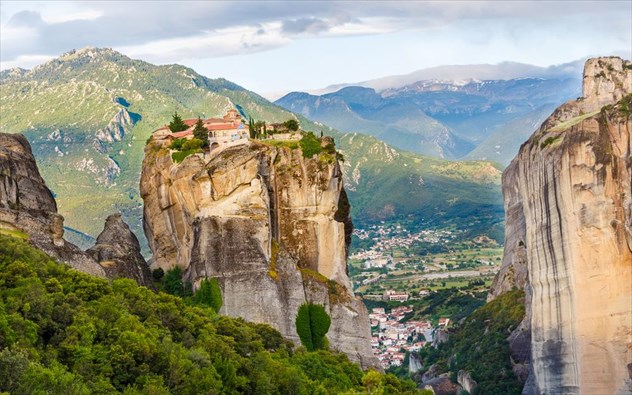photos www.clickatlife.gr
Combining the amenities of a city with the green landscape, Trikala meets the needs of the urbanite and those seeking nature and beautiful scenery.
Trikala is a four-and-a-half-hour drive from Athens (taking the Athens-Lamia highway and going through Domokos), and 3 hours from Thessaloniki. The town has 80,000 inhabitants many of whom cycle as the town is almost flat.

With its trees, scenery and the Litheos River, a tributary of the Pinios, and the Central Bridge which connects the main square with the pedestrian zone of Asclepius, Trikala is a wonder to behold.
Which way to go
Your first attempt to get acquainted with the town should be to have a walk through the old town. Consisting of the neighbourhoods of Varousi (Varos) and Palia Manavika (the old greengroceries) with their peculiar architectural style, the old town gives a different atmosphere to your trip and takes you to another era. THe Varousi neighbourhood, up until 1930, was consiered a 'bourgeoisie' neighbourhood of Trikala, today its houses being generally prereserved, as well as the old churches. Palia Manavika is also known for its architecture and boasts most of the good taverns and bars of Trikala.

On the hill of Prophet Elia, the defence tower of the city built in the 6th century by Justinian, embellishes the view, along with the huge clock placed by the Ottomans in the 17th century and the bell weighing 650 kg. From there you can also enjoy views over the city. On the hill there is also the Prophet Elia church, the Centre for Environmental Education and the town zoo.
The Osman Shah Mosque (Kursum Camii) should also be among the places to visit. This is a monument protected by UNESCO, built in the 16th century. Legend has it that the mosque was built by Osman Shah, because in Trikala he was cured from a long illness.

There are many museums in the town, along with the Archaeological Collection of Trikki with findings from the Neolithic Age up to the late Byzantine years, the Ethnographic Museum, where there are everyday objects, clothes, tools from the18th to the 20th century, the Museum of Musical History, the Mill of Matsopoulos that today is a historic craft park, the cultural centre, and many more.
A walk along Asclepius Street will make you feel the rhythm of the town, with its shops, people and energy.
Close routes to Trikala
If you have more days, you can visit any of the places near to Trikala.

You can stroll around the impressive village of Kalambaka, 25 km away and the Meteora, which rise out of the town, and visit some of the 30 monasteries seven of which are still functioning. Since 1988 they have been under the auspices of UNESCO.
You can visit Elati, a mountain village 32 km away from Trikala, built amphitheatrically in a fir-tree forest, at an altitude of 920 m, on Mount Kerketio. Karditsa is 26 km away from Trikala.
Paleokaria is also a nice destination, about 30 km from the town, famous for its arched bridges, flowing waters and wild nature.
A walk to Plastira lake can complete your autumn journey and enable you to enjoy the different scenery, before returning to the bustle of the big city.